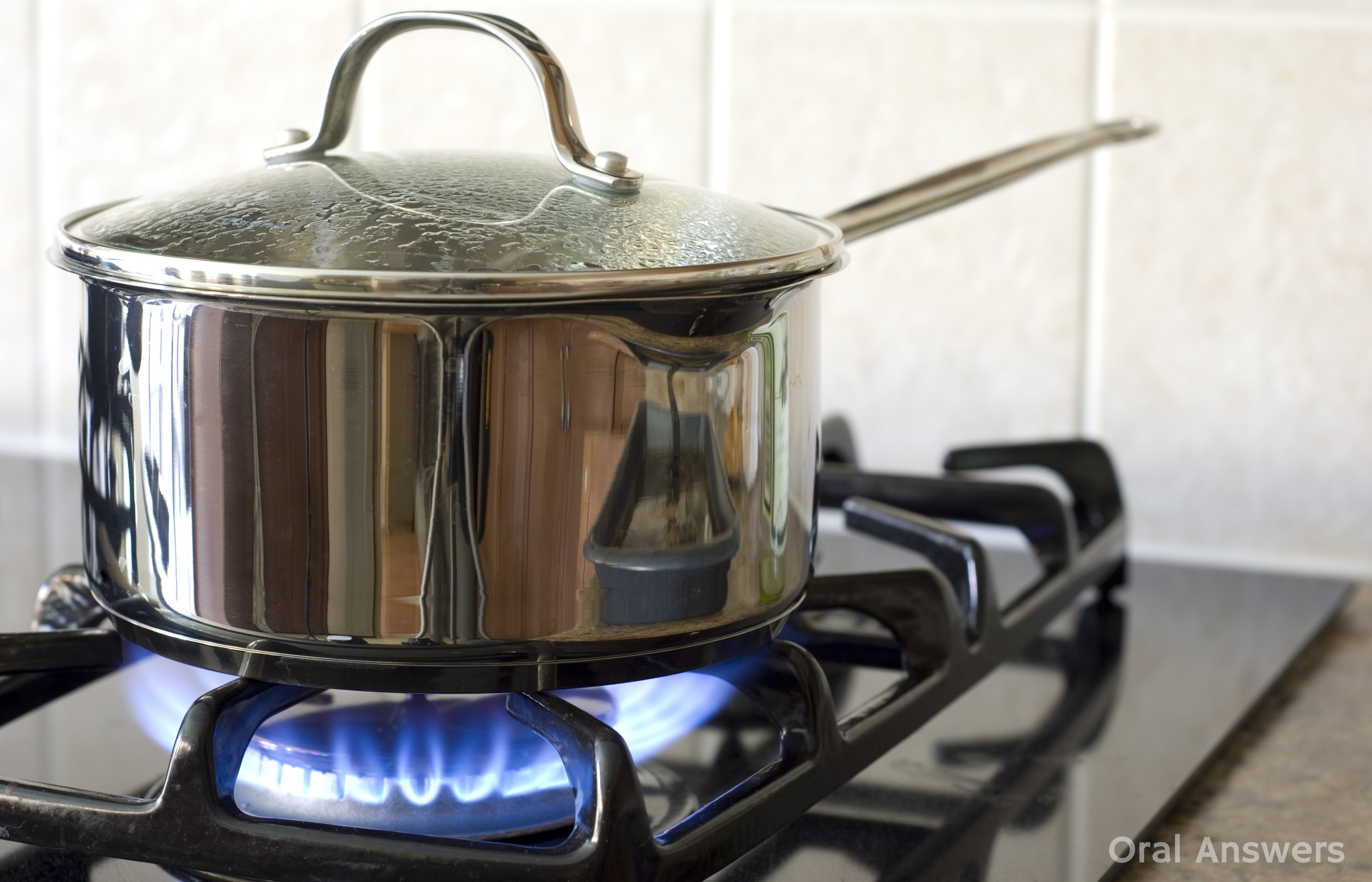Did you know that you could be tripling the level of fluoride in your water just by cooking in a Teflon-coated pot or pan? Similarly, you can also cut the amount of fluoride in your water by boiling it in an aluminum pot for just 15 minutes.
 You may think that you never boil water. However, many people use water for cooking. If you’ve made macaroni & cheese or another pasta, rice, oatmeal, or mashed potatoes lately, then you’ve probably boiled water.
You may think that you never boil water. However, many people use water for cooking. If you’ve made macaroni & cheese or another pasta, rice, oatmeal, or mashed potatoes lately, then you’ve probably boiled water.
Back in 1975, some researchers had a question. They wondered whether the type of container in which you cook food can have an effect on the fluoride content of what you eat. You can read the complete study by clicking the following link (FYI – It is in PDF form so it may take a bit to load): Effect of cooking vessel composition on fluoride. By: Full, CA and Parkins, FM.
The Procedure of this Fluoride Study
The researchers analyzed a community’s water supply and found that it had 1 PPM of fluoride (click here to find out how much a PPM is) They then took one pint (16 fluid ounces or two cups) of water and boiled it in one of four different containers. They used an aluminum pot, a stainless steel pot, a Pyrex bowl, and a Teflon pot. They turned the heat on high to obtain a rolling boil, and then reduced the heat “to maintain a moderate degree of boiling for 15 minutes.” Next, they put the water in a clean bottle for storage and tested each sample to see how the boiling had affected the fluoride levels. They even had a “control” bottle of water to ensure that their testing was accurate.
Their two significant findings were that the Teflon coated cooking vessel tripled the fluoride concentration from 1 PPM up to 3 PPM. They also found that the aluminum pot reduced the fluoride concentration of the water from 1 PPM down to 0.3 PPM. The Pyrex and stainless steel pots altered fluoride content slightly, but not enough to be statistically significant.
A Bar Graph of the Results
Here is a graph that I adapted from the paper showing the quantity of fluoride in PPM that was found in the water after boiling it for 15 minutes in the pot/pan made of that particular material. If you’re not sure what a PPM of fluoride is, read this article to find out how much a PPM is.

Why Did Teflon and Aluminum Change the Fluoride Level of the Water?
Teflon is actually the brand name for Polytetrafluoroethylene, which is a compound that contains only carbon atoms bonded to fluoride ions. In fact, it contains more than twice as many fluoride ions as carbon atoms. When water is boiled, some of the fluoride ions get dissolved into the water, thus increasing the fluoride concentration in the water. You can read more about Teflon on Wikipedia.
As for the aluminum, the researchers guessed that the aluminum was reacting with the fluoride to form the compound Aluminum Fluoride. Whether the compound stayed on the pan or formed in the water was not known.
Conclusion
I found this interesting that the type of metal our pots and pans are made of can affect the fluoride concentration in what we cook. I am currently studying a lot about fluoride and water fluoridation. I don’t think that the findings of this study really support or oppose water fluoridation, but it is interesting to know that we may be getting different amounts of fluoride from our water depending on what we do with it.
What do you think? If you have any opinions, comments, or questions about fluoride levels in your water, please leave them in the comments section below.

I’m not sure that I’d want to use an aluminum pot or pan, I’m dumping the teflon as I write this. It seems that fluoride is in so much these days that the government is finally thinking of removing it from the water supply. I’ve been using a Berkey water filter to remove the fluoride for awhile, but finding out that fluoride is in medications, processed food, teflon and a bunch of other stuff is freaking me out.
Hi Chris – I think because fluoride is in the water it has made its way into everything that is made with water. I believe that this has given the population too much of a good thing and has resulted in dental fluorosis in many people.
In a good move last week, the EPA has made the first changes to water fluoridation in the United States in 50 years by reducing the recommended amount of fluoride in drinking water from about 1.0 PPM to 0.7 PPM. (If you’re interested, you can click here to see how much 1 PPM really is.) Thanks for your comment, Chris!
This is very interesting information that I have never heard of, or considered, before. I find it astounding that the vessels in which we cook in can impact our fluoride levels. Perhaps the increased use of teflon pans is in part responsible to the decrease in cavities seen in the U.S. in recent decades. Extremely interesting, thank you for the research info. Please let me know of any new findings, thank you!! Pam O’Brien, RDH
Sounds like a brain control drug
Spank my ass and call me Judy.